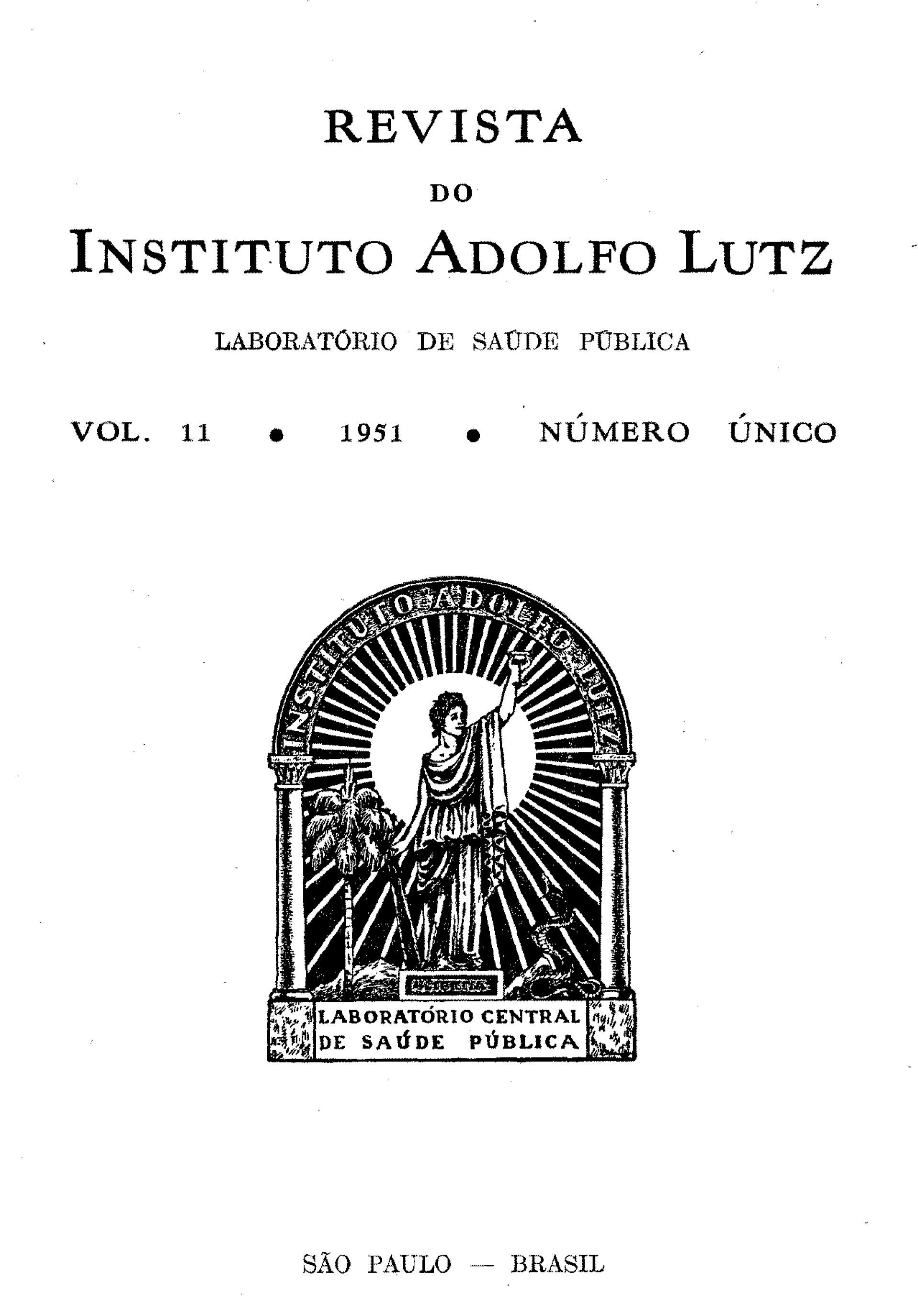Abstract
The authors present an unpublished microscopic method to value the percentage of hull contained in ground coffee, in order to contribute for the elimination of this kind of fraud, the frequency of which has been increasing lately because of the high price of the product. A morpho-histological study of the fruit and seed is made, illustrated with original coloured drawings. They describe the processes used in the microscopic examination of coffee and the means for the identification of foreign substances commonly added to the ground product. All the experiments were made at the "Sub-Secção de Microscopia do Instituto Adolpho Lutz", a great part of the samples having been kindly furnished by the "Superintendência dos Serviços do Café". A detailed exposition of the principles of the method for the counting is made, which, in synthesis, is the following:
Weigh 2 g of ground coffee and pass it through a conical cup containing 20 ml of chloroform, shake it many times, during 20 minutes, to discolour and take away the fat of the powder; filter and dry the remainder in a stove at 45oC; weigh 0,10 g of it and pass the same to a Petri dish, and look through a lens (increase of 10 - 20), gather with a wet platinum needle the peel elements (wich did not discolour by the chloroform), and transfer them to a water drop placed on a slide. Take away the water excess with a filter paper, trying to adapt the hull particles to a square formation. Adjust the thin plate to a pattern picture and look for the corresponding surface reticule. The explanation is given as to how the calibration of the pattern picture reticules is obtained, which permits the determination of the percentage from 0,28 to 60% of coffee hull. Several photos and pictures are presented, in order to help the interpretation of the results, Based on the results obtaned from the tests, the authors came to the following conclusions:
This microscopic method comes to fill, in a satisfactory way, an old blank which existed for a long time in bromatology. It permits the determination of the impurity percentages contained in ground coffee, starting from 0,28%, being of an easy interpretation because it does not present difficulties of technical or scientific order. Its application may be extended to the count of any adulterating substance, as long as a special calibration of the reticules is made. It makes possible the elimination of certain frauds, favouring the fiscalization of ground coffee as it is given for sale, and permits the study of a toleration limit to be adopted for inferior types of coffees. Trusting in the security of this method, the authors are looking forward for its officialization.
References
1. BAILLON,M. H. - Dictionaire de botanique. Paris, Librairie Hachette et Cie., 1876; 1: 544.
2. CULBRETH,D. M. R. - A manual of materia medica and pharmacology. New York, Lea & Febiger, 6. ed., 1917; p. 547-551.
3. HAGER-MEZ- EI microscopio y sus aplicaciones. Barcelona, Gustavo Gili Editor, 1922; p. 104-112.
4. HERAIL, J. - Traité de matiêre médicale, pharmacographie. Paris, Librairie J. B. Bailliel'e et Fils, 1927; p. 626-638.
5. MACÉ, E. - Les substances alimentaires. Paris, Librairie J. B. Bailliêre et Fils, 1891; 363-379.
6. MENEZESJR., J. B. F. - 1950 - Do exame microscópico nas fraudes do café. S. Paulo, Boletim da S. S. C., Secr. Fazenda 25 (275): 5-7.
7. MOELLER,J. - Guia para ensayos micro-farmacognósticos. Barcelona, Editorial Labor S. A., 1927; p. 130-131.
8. UKERS, W. H. - All about Coffee, New York, The Tea & Coffee Trade Journal Company, 2. ed.; 1935.
9. WINTON,A. L. e K. B. WINTON,- The Structure and Composition of Foods. New York, John Wiley & Sons. Inc., 1932; 4: 140-162.
10. YOUKGKEN,H. W. - Tex-book of pharmacognosy. Philadelphia, The Blakiston Company, 5. ed., 1943; p. 828-833.

This work is licensed under a Creative Commons Attribution 4.0 International License.
Copyright (c) 1951 Instituto Adolfo Lutz Journal
